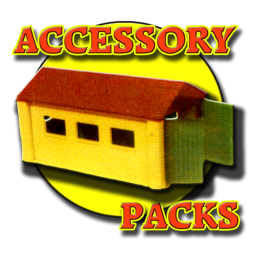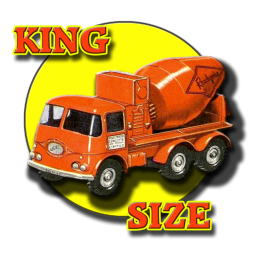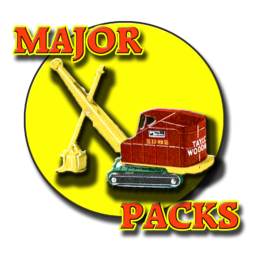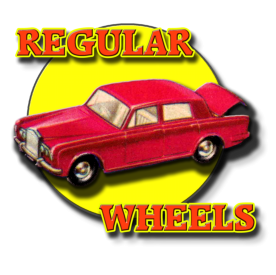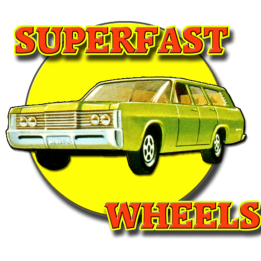


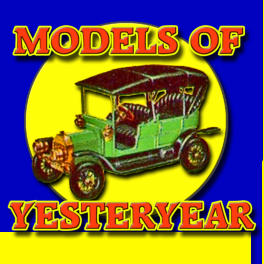
FEEDBACK: MATCHBOXPAT@YAHOO.COM



This page will help you understand how different variables play a role in the identification of a box variation
In order to easily recognize a box variation, it is important to be able to identify the different variables that make a box variation unique. Every box type has its own set of variables, but a few are common to every type.
We define two kinds of variables:
- Major
- Minor
Major variables are based on:
- The drawing or picture of the model
- The size (height and length)
- The model number
Minor variables are based one:
- Side colors (mainly for regular wheel boxes in shades of blue or black)
- Wording on end flaps (descibing the model name)
- Inside panel (for King Size F boxes)
- Size (depth)
MAJOR VARIABLE - DRAWING OF THE PICTURE OF THE MODEL
The first common variable, the drawing (for A, B and C types) or picture (for D, E, F and G types) is probably the most obvious of all. The model can be in different colors for the same box type. The difference is sometime
subtle...Here are some example :
The 48B : The C type box shows the model in red or in yellow and red.
The 24C : The E type box shows the model in red or blue.
The picture or drawing of the model will be considered as the first major variable in order to catalogue boxes.
MAJOR VARIABLE - THE BOX SIZE
For differences that have an impact on the picture, we consider the this a major variable. So the differences in length and height are both consider a major variable. The depth, since it has no impact on the picture but only on the
sides and end flaps, is considered a minor variable. There are numerous examples for the B type (RW), and a few for E type (RW).
The same drawing, with the same model number can be found on the B type box for the 29A. But one major variable is different : the size.
The early 26C were released in a smaller box before a longer one was available.
To qualify as a major variation variable, the size of the box for a given model has to be different in size. For example, a model that has the same picture and model number characteristics available in size 1 and 2 will have the same
major variation and two minor variations (with the box size as a variable). If the model has the same picture and model number characteristics but is available in size 2 and 3, there will be two major variations because the box length
is different. A good example is 5B, where we have size 1, 2 and 3 for the same drawing. However “RW-05B-B2-3a” (size 1) and “RW-05B-B3-3b” (size 2) are under the same major variation, while “RW-05B-B4-5a” (size 3) is under a
different major variation, as the front is stretched to fit a size 3 box.
MAJOR VARIABLE - THE MODEL NUMBER
This third major variable takes different form depending on the box type. But for most of them, the model number can be a major parameter. The following examples illustrates that :
For the B type box of the 73A, the "No 73" is larger on the first picture, and it is slightly on the left. The same thing applies for these two varaitions of the 61A. The left or right top of the "A MOKO LESNEY" scroll is very helpful to determine
the differences.
The model number also plays a major role for the D type boxes : the model number can be found smaller almost all of the time for D1 types (model name with serifs on en flaps) and larger for D2 types (model name without serifs on end
flaps). For boxes with "New Model" on end flaps, the model number can be smaller, equal or bigger than the D1 without "New Model", but almost always smaller than the D2 type. The 53B illustrates this particularity : the first box shown is
the D1 box with "New Model", the second is the D1 without the "New Model" and the last is the D2 box. The D type section of this Website takes a closer look at this situation.
For the E type, the 37C can be available with one or two #37. This is the only model for which this type of variable plays a role for E type boxes.
Unlike types B, D and E, where the end flaps play the role of identifying sub types, the sub type for the F type depends on the model number and where the word "SERIES" is placed (see the F type section for more details on that topic).
The 6D is is a case that features two of the three different sub types. The first picture illustrates the F1 box, with "SERIES" in the blue square beneath the model number, while the second picture shows the F2 box, with the word "SERIES"
on the left of the model number, beneath the "MATCHBOX".
Based on these three major variables - the picture or drawing, the size and the model number - we have the main parameters that can easily help you distinguish one variation from another. However, every series and box type has its own
set of minor variables.
MINOR VARIABLES
Anything not related to the drawing, the length or heigth and the model number is considered a minor variable.
THE SIDE COLORS
The side colors mainly play a role on Regular Wheels, although some Accessory Packs and Major Packs have a few cases too. The regular wheels have differentcolors (black or blue for most cases) as well as different shades of blue. For
the F boxes, an illustration is also used on them (only the AP garage has had that in the past). Some King Size boxes also bear an illustration on sides (or top and bottom if we prefer to call them this way!) but since they depend mostly on
sub types, they don’t play a role in the variation list.
WORDING ON END FLAPS
Wording on the end flaps is also a characteristic that mainly plays a role for variations for Regular Wheels as minor variation. One example is the model name, that can be written on 1 or 2 lines. 21C D2 boxes have this special case:
Some RW boxes also have situations where the model is described in 2 different names. Here, the same drawing applicable for B4 boxes of 60A have a different model name:
Note that the use of “NEW MODEL” on the end flap is also a minor variable based on the wording on the end flaps.
DEPTH OF BOXES
For Regular Wheel boxes, some minor variation can include de depth of the box. For example, the 62B TV Van has, for the same drawing and other major variations, two different depths that makes them distinct variations based on this
minor variable.
INSIDE PANEL (For KING SIZE F2 boxes)
The F2 King Size boxes have an inside panel that shows the model in action, but sometimes it’s just a pattern. For example, the 15A Fire Engine has 3 different panel: one that only show a flame pattern, one with Fire on Industrial Site and
one with a Fuel Tank Fire with a Mercedes Ambulance. Those boxes are analyzed in depths in the King Size F Box page.
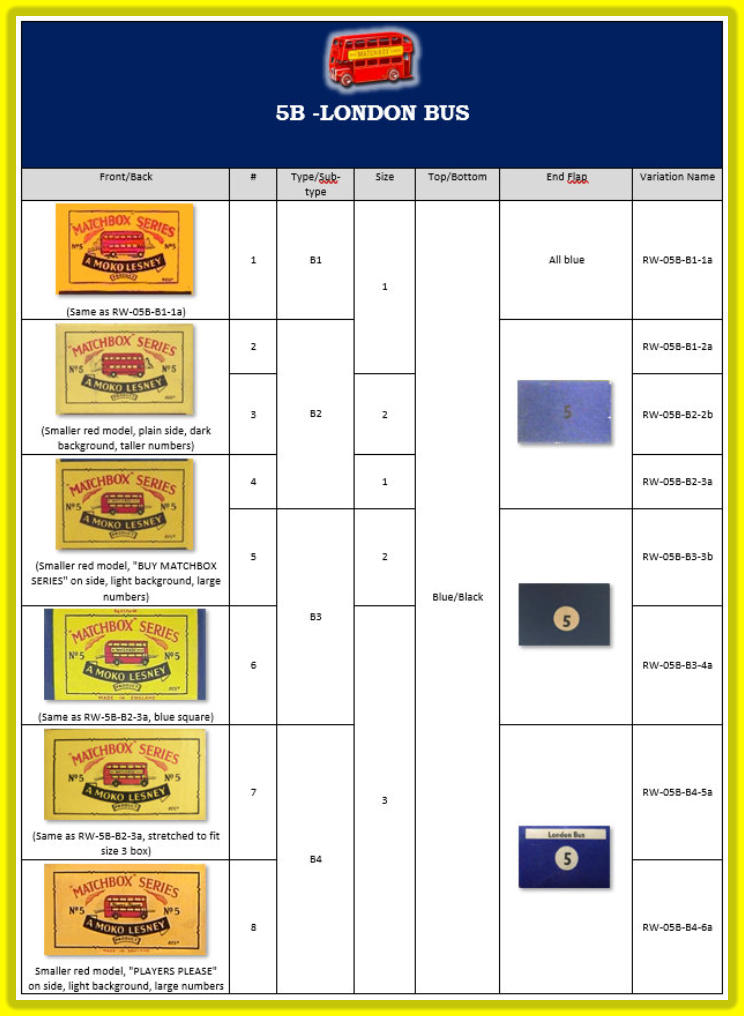
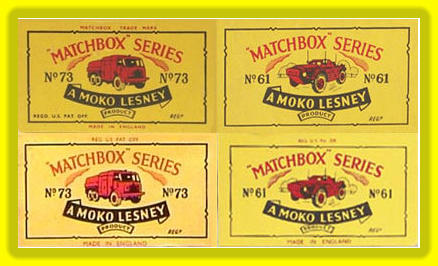
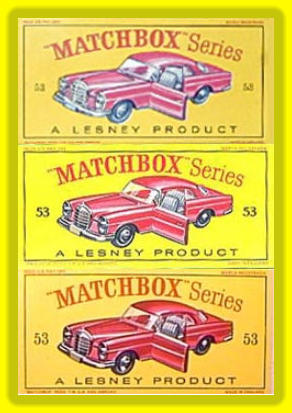
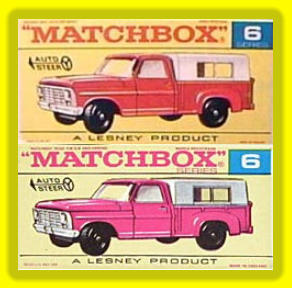
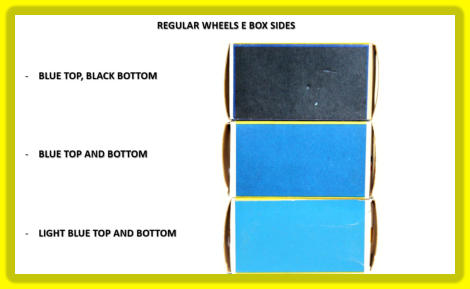
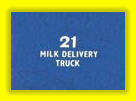



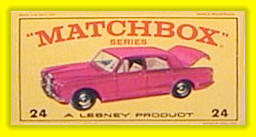
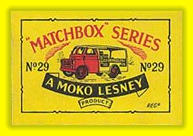
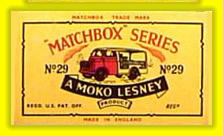
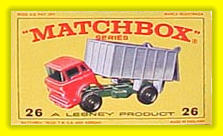
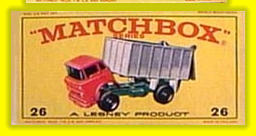
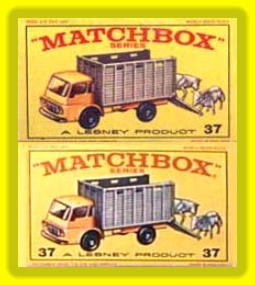
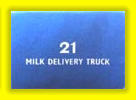


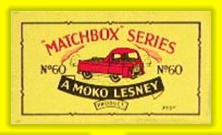
SITE LAST UPDATED ON: 2023-07-16
© All rights reserved. Vintage Lesney Online 2002-2023








